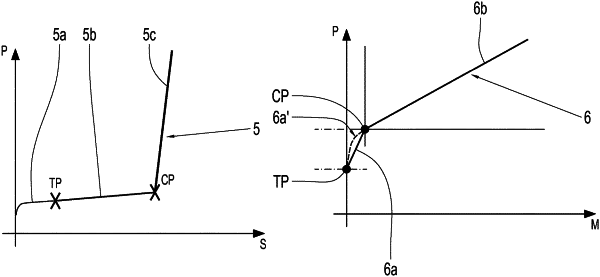| CPC F16D 48/06 (2013.01) [F16D 13/52 (2013.01); F16D 13/648 (2013.01); F16D 2500/10412 (2013.01); F16D 2500/1045 (2013.01); F16D 2500/50236 (2013.01)] | 9 Claims |

|
1. A method for operating a friction-locking shift element (1) of a transmission of a motor vehicle, the method comprising:
actuating the friction-locking shift element (1) for engagement according to a pressure versus torque characteristic curve (6), the pressure versus torque characteristic curve (6) defining a power transmission capacity of the friction-locking shift element (1) and associated torque that is transmissible by the friction-locking shift element (1) depending on an actuating pressure of the friction-locking shift element (1), the pressure versus torque characteristic curve (6) having a first characteristic point and a second characteristic point, the first characteristic point being a touch point (TP), the second characteristic point being a contact point (CP), the pressure versus torque characteristic curve (6) including a first characteristic curve range (6a, 6a′) between the touch point (TP) and the contact point (CP) and a second characteristic curve range (6b) starting at or after the contact point (CP),
wherein, once the touch point (TP) is reached, the friction-locking shift element (1) begins to transmit torque mainly due to drag torques,
wherein, once the contact point (CP) is reached, the friction-locking shift element (1) begins to transmit torque mainly due to friction between shift-element halves (2, 3) of the friction-locking shift element (1),
wherein the first characteristic curve range (6a, 6a′) has a first functional dependence (6a, 6a′) between the power transmission capacity and the actuating pressure and the second characteristic curve range (6b) has a second functional dependence (6b) between the power transmission capacity and the actuating pressure.
|